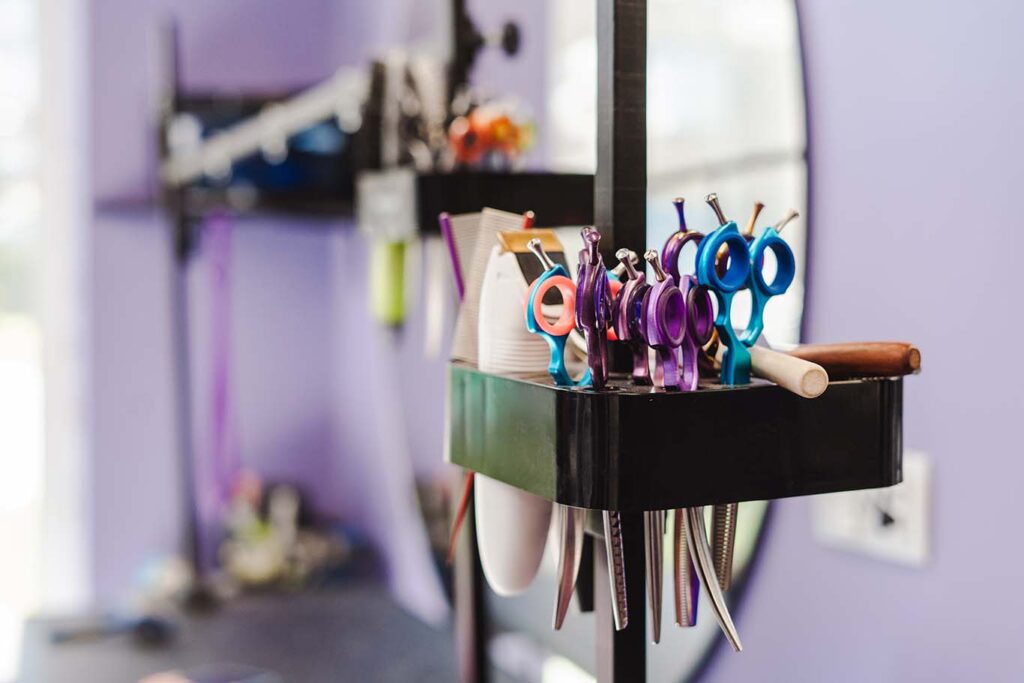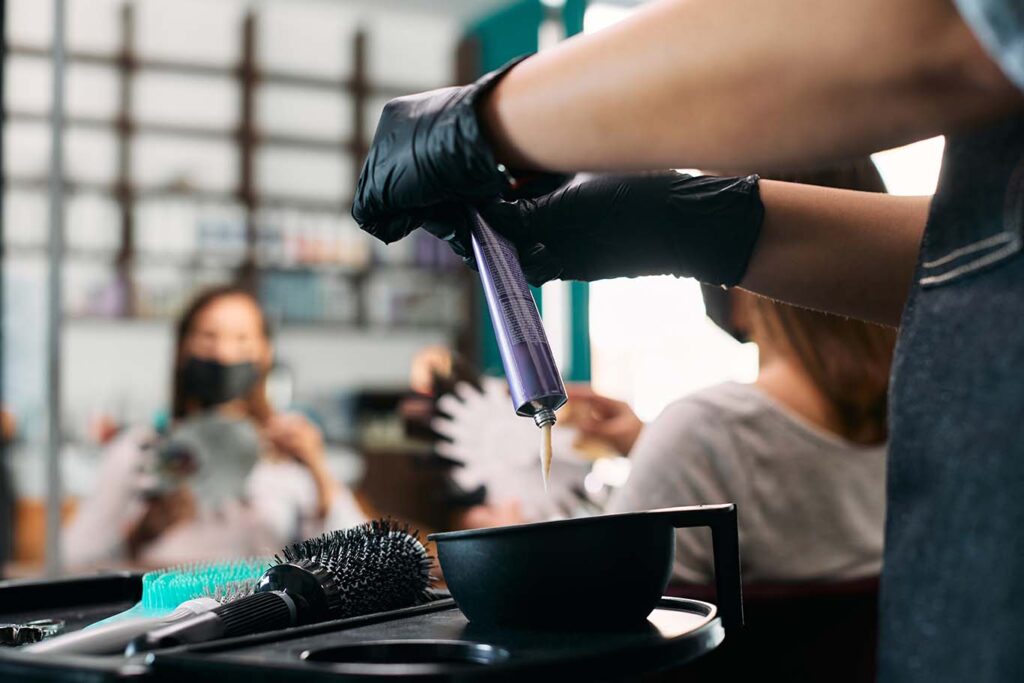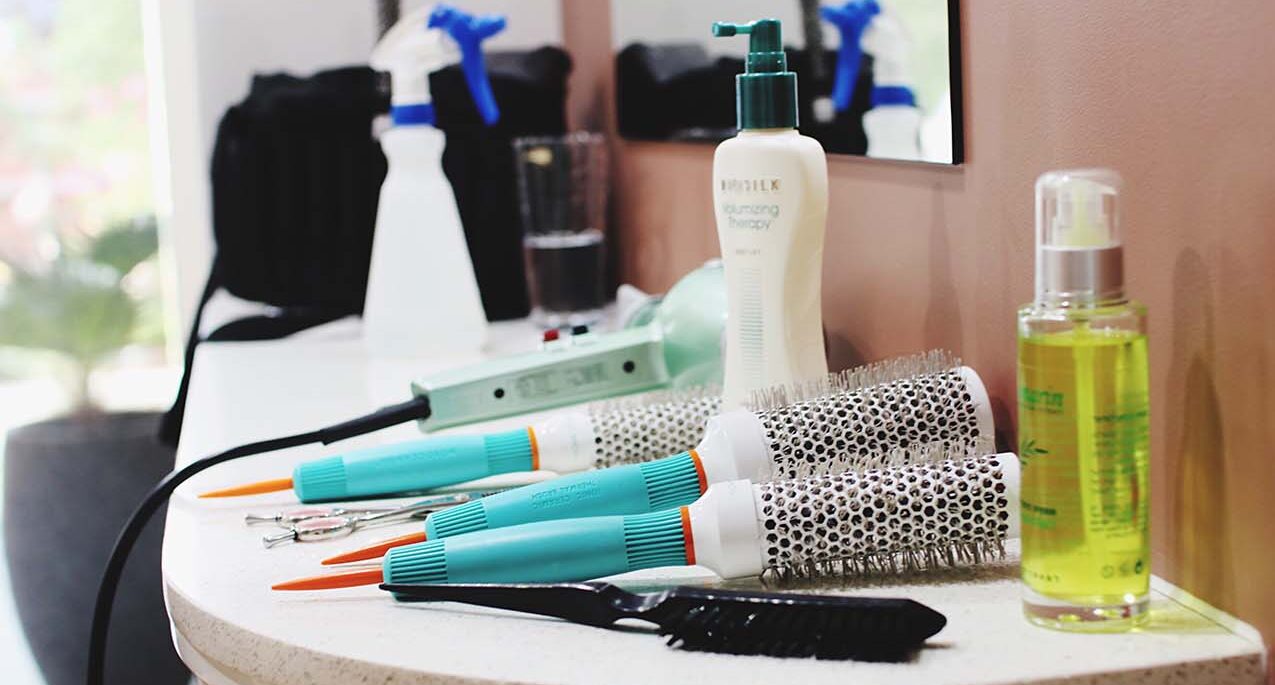Table of contents
Ever found yourself mid-colour treatment only to realise you’ve run out of toner? Or noticed a stack of expired shampoos at the back of your storage cupboard? You’re not alone. Many salon owners struggle with inventory headaches that affect day-to-day operations.
If you want smoother operations, improved efficiency, and a more profitable business, then getting your salon inventory management under control is a must. Failing to do so can significantly impact your bottom line. Supplies are a major cost centre in any salon, and mismanaging them means lost revenue, wasted products, and frustrated clients. Some industry estimates suggest that supplies can account for around 10–15% of a salon’s revenue. That’s a big chunk, especially when product waste or over-purchasing cuts into profits.
In this blog, we’ll explore how to streamline your inventory practices to reduce waste, save money, and keep your clients happy.
What is inventory management for hair salons?

Inventory management is the process of tracking, ordering, storing, and auditing your salon’s stock. This includes everything from hair dyes and shampoos to towels, gloves, and even drinks for clients. For salons, inventory management isn’t just about counting bottles – it’s about ensuring you have the right products available at the right time, without hoarding stock that ends up expiring or tying up your cash flow.
Why inventory management matters for salons
Good inventory management can make a huge difference to your business. It reduces waste by ensuring products are used before their expiry date, and it prevents those embarrassing moments when you’re caught short during an appointment. Nothing damages your reputation quite like having to cancel or improvise due to missing products.
When your team knows exactly what’s in stock, they can work more efficiently and deliver a smoother, more professional service. A well-organised salon helps everyone – from the stylist to the receptionist to the client.
And let’s not forget the financials. You don’t want to tie up too much cash in unused stock sitting on shelves. Products expire, trends change, and every penny counts. Striking the balance between having enough and not having too much is key.
Core components of salon inventory management

Tracking your supplies
The foundation of good inventory management is knowing exactly what you have. Whether you’re using a colour-coded spreadsheet, stock cards, or digital software, accurate tracking is essential. Weekly stock checks can help you stay on top of your inventory, especially for high-usage items.
Set a routine – doing stock takes at the same time each week or day creates consistency. This works especially well if your business sees fairly steady traffic from week to week. During busier or quieter seasons, you might need to adjust the frequency.
Barcode systems, product labels, and simple checklists can also streamline the process. The key is to find a method that works for your team and stick to it.
Ordering: Smart and systematic
Ordering stock should never be a guess or a rush. Establish par levels for each item – the minimum amount you should have on hand before you reorder. Once an item drops below that level, it’s time to place a new order.
Avoid panic buying by creating a set order calendar. This not only saves you time, but also gives suppliers enough notice, especially during busy periods like December or prom season.
Take note of seasonal demand and adapt your ordering patterns. For example, lightening products might fly off the shelves in summer, while deep conditioners could be more popular in winter. Analysing previous usage trends can help you order smarter, not harder.
Storage: Organisation is key
A tidy stockroom isn’t just nice to look at – it improves workflow and minimises product loss. Group items by type, use, or frequency. Use the FIFO (First In, First Out) rule to rotate stock so that older products are used before newer ones.
High-value items like colour or tools should be kept in secure, clearly labelled areas. Consider investing in lockable cabinets or designated storage spaces for premium products.
Health and safety compliance is another factor. Make sure products are stored according to guidelines – especially chemicals – to protect your staff and avoid breaches.
Auditing: Regular reviews prevent surprises
Even with the best intentions, stock can go missing, expire, or sit unused. That’s why audits are essential. Set a schedule – whether monthly or quarterly – and stick to it. Look for patterns, such as consistently unused products or frequent shortages of others.
Your team is your biggest asset here. Get them involved – they know what’s flying off the shelves and what’s gathering dust. Regular audits help keep your system accurate and highlight areas for improvement.
This is also the perfect time to declutter – get rid of anything expired, damaged, or discontinued, and update your stock records accordingly.
Leveraging technology
Technology can transform the way you manage your inventory. Salon management systems like SalonIQ, and Vagaro can automatically deduct products as services are performed, keeping your stock levels up to date in real-time.
Mobile inventory apps make it easy to do quick stock takes or check quantities on the go. Many platforms offer automatic reorder reminders, usage reports, and trend analysis.
These trends can be revealing – for example, discovering that one stylist uses 30% more colour per treatment could prompt useful training or highlight inefficiencies.
Popular inventory management processes in the hair industry

UK salons typically use a blend of manual and digital processes depending on their size, budget, and tech comfort level. Here are a few of the most common:
Manual tracking with spreadsheets – still widely used in smaller or independent salons. Weekly or monthly checks are done by hand and tracked in Excel or Google Sheets. It’s low-cost but time-consuming.
POS-integrated inventory systems – platforms like Treatwell offer stock tracking as part of their all-in-one salon software. These systems automatically update inventory when services are recorded and can suggest reorder points based on usage trends.
Supplier-integrated systems – Some UK suppliers such as Salon Services and Aston & Fincher offer online ordering platforms that integrate with salon accounts, making reordering fast and straightforward.
Stock cards and par sheets – Old-school but effective, especially for back-bar stock. These are printed cards showing minimum and maximum stock levels to guide reordering.
Professional distributors’ support – Many distributors offer inventory support and advice for their customers, including training on product usage, shelf-life, and optimal order frequency.
The most effective salons usually combine these tools with a regular auditing routine and clear team responsibilities.
Tips for getting staff onboard
Even the best system won’t work if your team isn’t on board. Make sure everyone understands the why behind good inventory practices. Clear communication, training sessions, and simple step-by-step guides can make a big difference.
Assign inventory champions – staff members responsible for certain products or storage areas. This not only spreads the load but creates ownership and accountability.
A small reward system – like a coffee voucher or team shout-out – for keeping things organised or reducing waste can boost morale and reinforce good habits.
Common mistakes to avoid
- Buying in bulk just because it’s cheaper – if it expires before you use it, it’s not a saving.
- Ignoring slow-moving stock – ask yourself why it’s not shifting. Can it be repurposed or discounted?
- Taking on the entire task yourself – you’ll burn out, and things will slip through the cracks. Involve your team and delegate wisely.
In summary…
Managing your salon’s inventory might not be the most thrilling part of your role, but it’s one of the most impactful. With clear routines, the right tools, and team engagement, you can avoid waste, reduce costs, and deliver a seamless experience for every client.
Start simple – take a stock count, set some reorder thresholds, and trial a digital tool if you’re not already using one. As your salon grows, these systems will form the solid foundation you need to scale with confidence and control.
Get Hairdressing Insurance from Protectivity

*Disclaimer – This blog has been created as general information and should not be taken as advice. Make sure you have the correct level of insurance for your requirements and always review policy documentation. Information is factually accurate at the time of publishing but may have become out of date.
Last updated by
















